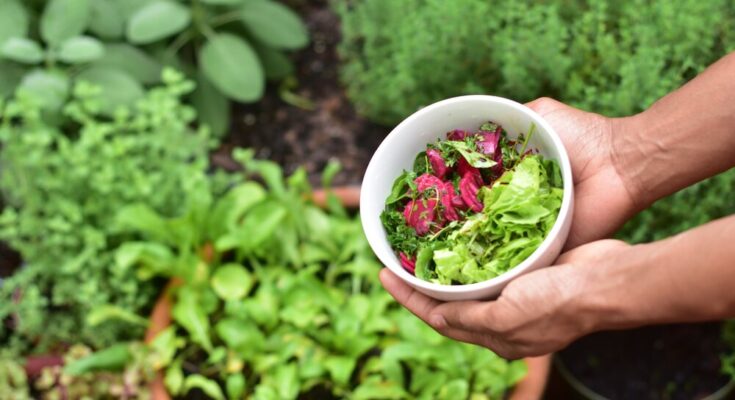Having a garden can be a gratifying pastime if you’re looking for something more practical with which to occupy your time. While reading is a common hobby for people looking for a relaxing and meditative hobby, gardening also offers you the chance to be a little more active and spend some time outdoors in the sunshine. It can also help you develop new skills, as you need some knowledge to start a garden and take care of plants. Otherwise, it all falls apart.
If you’ve never had a garden but it’s been a long-time dream to grow one, here are some of the things you should have in mind.

Source: https://unsplash.com/
Basic knowledge
If you’ve never had a garden before, it’s likely that you don’t hold a lot of expertise when it comes to taking care of plants. For this reason, it’s essential to do your research before planting to have a rough idea of what you need to do. Starting off without any prior knowledge can lead you to make substantial mistakes that cause your plants to wilt and die.
That can be a pretty depressing experience, especially since it’s your first time trying your hand at gardening. Being well-equipped is the key to getting off on the right foot and having a more successful outcome. While nothing can guarantee that you’ll be able to build a luxuriant garden on the first try, you’ll still have a better chance of succeeding if you become accustomed to a few of the most important tips, which include:
- Learning about the soil: Test your garden’s soil for pH and try the puddling test to determine the clay content. This can give you a good idea about which plants you can put in and which are likely to have a more difficult time and should be avoided until you become more adept at gardening.
- Look around you: To get a good idea of the plans, you can start with, look at your neighbors’ gardens. What worked for them will most likely work for you as well.
- Avoid leaving too much soil bare, as it means you’ll have to spend considerable time pulling out weeds.
- Mulch thickly in spring to improve soil fertility, conserve moisture and reduce weed growth.
- Know the aspect of your garden: Determine which parts the sun reaches and in which direction the wind blows. Take the shade into consideration as well, and consider the altitude to determine if the area is susceptible to frost pockets during the winter months.
Consider the design
When you’re thinking about starting a garden, you’ll also want to consider the overall design. When you’re a beginner, you’ll want to go for something simple, such as a traditional cottage garden. The best thing about this design is that it is mainly unstructured and informal, making it perfect for the domestic environment.
You don’t have to worry about getting it to look too polished, as the strengths of a cottage garden are its charm and picturesque qualities rather than grandeur. Moreover, this garden style allows you to grow a mixture of ornamental and edible plants and other culinary herbs. In this sense, it is both a beautiful and practical space that can help you grow organic foods for home-cooked meals.
The rest of the decorum is important as well if you’re looking to create a cohesive design. At Elho, you can find a wide range of sustainably produced flower pots that can help you make an aesthetically-pleasing garden. There are different planters suitable for every garden, and you can find the ones that work best for you if you dig around a little. You can also bring some of the plants inside, on your balcony, or in your rooms, and experience the beauty and tranquility plants offer indoors as well.
Learn about plants
It should go without saying, but when you’re building a garden, it’s imperative that you learn as much as you can about all types of plants. While the general rule is that all plants require water and sunlight to survive, the truth is a little more complicated than that. Different friends require different moisture levels, both in the soil, on their leaves, and in the air. They also need different levels of sunlight. While some bask in the rays and require a lot of solar power to survive, others feel just as great in the shade, and too much sunlight can actually damage and scorch them.
You should also learn about the different ways the plants you have in your garden can change the whole look of not just the grounds but the house and surrounding landscape. To create a traditional, timeless look, for example, you must look for ways to make your garden look like it’s been there forever. You want it to look like an organic part of your household.
Although it can seem challenging to achieve this effect, especially since you’re not a proficient landscape designer, the key is simplicity. Gardens are spaces of life and, as such, should be sympathetic to the environment that surrounds them. Use local, environmentally-friendly materials such as stones or wood when designing your gardens. Make fencing as unobtrusive as possible, using chestnut paling. Check out www.cedarmountainfence.com for professional cedar wood fencing services and installation ideas.
You can also forgo it altogether if that’s a feasible option for you. If you live in a rural area, this particular sense of naturalism will make the whole ensemble all the more charming. Creating a garden from scratch is no easy task. You have to take into account many different aspects to create an environment that doesn’t only survive but manages to thrive and develop.
Throughout this journey, you’ll likely feel frustrated repeatedly, and it’s very likely that some of your plants won’t make it. It’s crucial that you learn from your mistakes and remember not to repeat them in the future. In the end, you’ll notice that working in the garden is one of the most rewarding aspects of it all. It comes with trying your best and putting your whole heart and soul into it.




